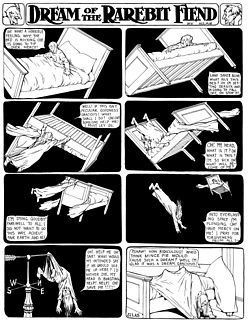Production and release

The Fiend was played by John P. "Jack" Brawn.
The Edison Military Band performed a piece called "Dream of the Rarebit Fiend" on an Edison cylinder (Edison 9585) in 1907, [5] written by Thomas W. Thurban. The piece was likely inspired by Porter's 1906 film, and may have been intended to accompany it. The piece was written for 18–20-piece band, and has been recorded numerous times. [6]
